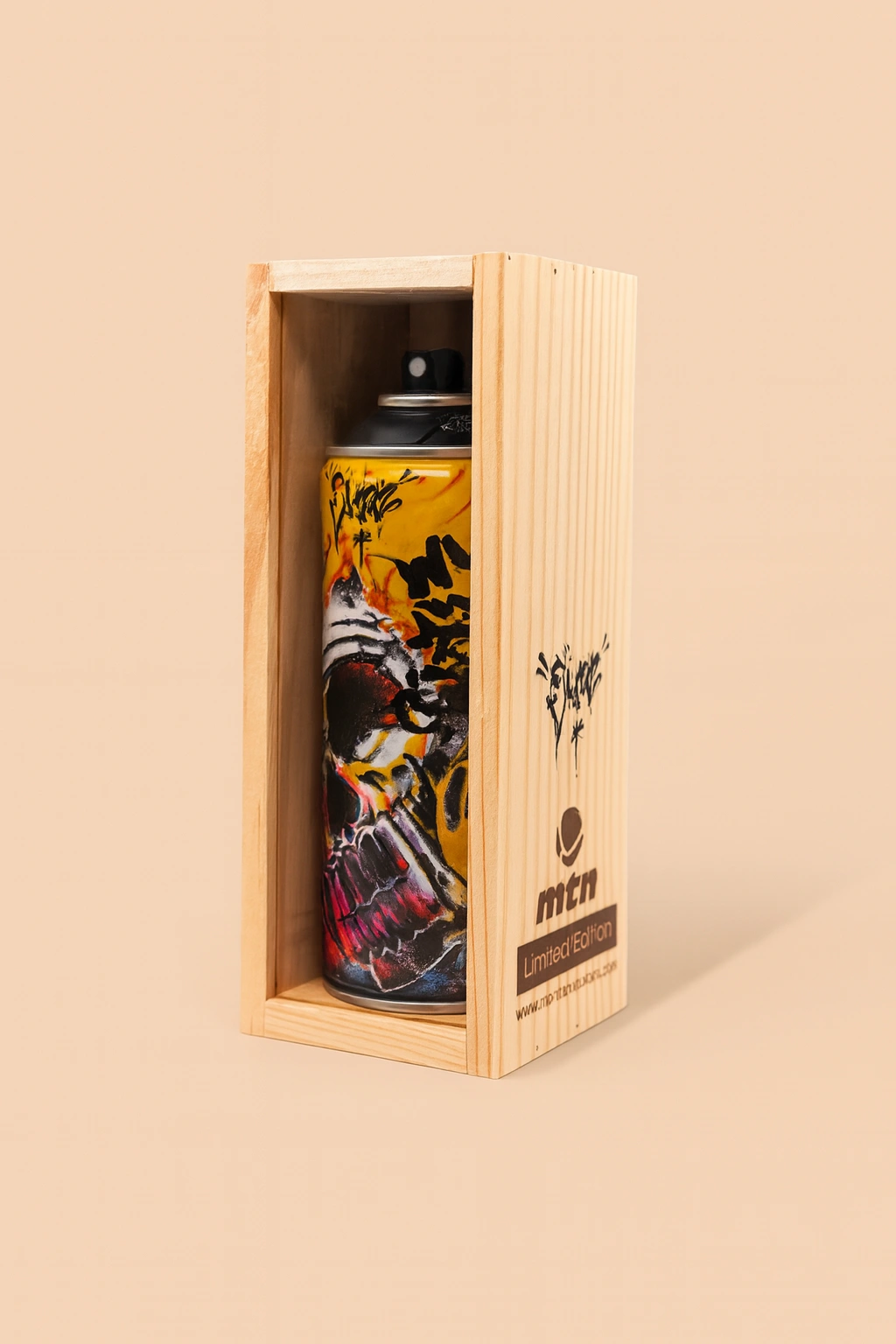In an online world dominated by algorithm-friendly content and brand-safe aesthetics, the Instagram account @newyorkfat stands defiantly apart. It is a raw, analog counterpunch in a digital age—full of throw-ups, tool breakdowns, battle-scarred gear, and tagged-up infrastructure. Less a moodboard and more a digital zine, @newyorkfat celebrates the visceral heart of graffiti culture and centers its storytelling around the unsung hero of the game: the spray cap.
At the center of this archive is PALLO, a name synonymous with fast paint, sharp memory, and total authenticity. If New York graffiti culture had a pressure gauge, PALLO would be hovering at the red line—always moving, always observing, and always documenting the lineage, attitude, and evolution of tools like the NEW YORK FAT CAP2.
This isn’t just nostalgia. It’s fieldwork. And in the subcultural world of graffiti, where the difference between “real” and “tourist” can be felt in seconds, PALLO is firmly rooted in the real.
Cap Culture: More Than Just Hardware
Graffiti writing is full of iconic tools—ink markers, mops, scribe pens—but few pieces of gear carry as much mythology as the spray cap. Specifically, the New York Fat Cap, a component that defined the look and speed of graffiti in the 1980s and 90s. Originally jacked from household aerosol products, fat caps gave writers a wider spray, faster fills, and iconic flared lines. They enabled quick, bold expressions—essential in a culture where time was often measured in seconds.
The New York Fat Cap2, a recent evolution of that classic, builds on its legacy. PALLO doesn’t treat this as a product drop. It’s a cultural event. On @newyorkfat, comparisons between the OG and the updated version are laid out with the seriousness of an engineer testing a prototype. The flow, pressure, line weight, and grip all matter. It’s about how the cap behaves under real conditions—on cold brick, rusty metal, slick glass.
PALLO’s verdicts are brutally honest, usually accompanied by tagged samples, crushed cans, or dissected gear. These aren’t unboxings. They’re field reports.
@newyorkfat: More Than a Feed, A Digital Blackbook
@newyorkfat reads like an open notebook: handwritten, unfiltered, and grounded in decades of collective knowledge. There’s no polish, no brand partnerships, no illusion of influencer curation. Instead, followers get videos of cap tests, close-ups of fat throwies, tool reviews, and anecdotes from the field. One day might feature a discussion of flow rate. The next, a photograph of a destroyed pair of gloves, captioned with two words: “STAY READY.”
There’s also a strong focus on educational content—for those who’ve earned it. Posts about cap sizes, fade techniques, streak performance, and racking etiquette serve as informal workshops. PALLO doesn’t explain like a teacher but like a fellow writer who expects you to already know the basics. The tone is direct, sometimes aggressive, but always rooted in love for the craft.
If the streets are a classroom, @newyorkfat is the graffiti seminar. Raw, opinionated, and not afraid to name names.
Why the Cap Still Matters
To an outsider, obsessing over a tiny plastic nozzle might seem absurd. But in graffiti, it’s the cap that defines the voice. A fat cap can change the scale of a piece. It can make a simple name explode with attitude. It creates the line weight, the movement, the aura. Thin caps are for outlines. Fat caps are for making statements.
The New York Fat Cap2 continues that legacy, offering increased control without sacrificing flow. PALLO’s tests showcase how it holds up under fast fills, vertical drops, and layered motion. The shape of the flare, the hissing rhythm of the spray, the splatter control—all of it matters. Every variable becomes part of the writer’s fingerprint.
A great cap makes a piece feel like an extension of the body. PALLO captures that energy frame by frame, post by post.
A Toolkit Built by and for Writers
What sets @newyorkfat apart is its commitment to the tools of the culture—not the commodified gear, but the field-worn essentials. PALLO frequently posts flicks of crates full of rusted caps, worn-out gloves, half-empty cans, and taped-up markers.
There’s a clear reverence for real-use items:
- Molotow and Rustoleum cans, with dented bodies and makeshift nozzles
- Empty mops refilled with homebrew ink, their nibs stained from nights of use
- Cracked goggles, black gloves, and custom pouches, not for fashion but for survival
- USPS 228 stickers, hand-tagged and pasted in places where time is tight
It’s not about showing off gear. It’s about respecting the wear. These tools are not precious—they’re purposeful. PALLO makes it clear: “If your cap’s still clean, you haven’t used it enough.”
Graffiti as Motion, Memory, and Mechanics
There’s a recurring theme in PALLO’s posts: movement. Every tag, every throw-up, every cap test is about velocity. The idea isn’t to produce unique pieces, but to be present in the moment of creation. The sound of the can. The feel of pressure through the finger. The way the paint curls off the wall when the cap hits just right.
PALLO documents this motion with care. The blur of a hand. The gleam of chrome in low light. The ripple of drips down a train door. It’s about speed—but also about presence. Graffiti isn’t just about what gets left behind. It’s about how it was made.
The FAT CAP2, in this context, becomes a time capsule. Every tag is a recorded action—a looped memory, frozen in paint.
Cultural Influence and the Line Between Style and Spectacle
The visual codes of graffiti—drips, fades, overlays—have been adopted by sly brands and streetwear designers for decades. But PALLO’s work reminds viewers where those codes originated: not in design studios, but on city walls, in subway tunnels, and under highway bridges.
When a brand borrows graffiti aesthetics, PALLO calls it out: “Don’t talk about bombing if you never caught a chase.”
There’s a clear line between style and spectacle. For PALLO and the culture surrounding @newyorkfat, the tools aren’t accessories—they’re signifiers. The cap is proof of presence. The marker is evidence of intent. And the wall is still the final word.
Community and Code: The Writers Who Know
The comment sections on @newyorkfat are full of shorthand, inside jokes, and technical breakdowns. It’s a community of writers, each adding their perspective, sharing cap combos, and praising clean flares. Debates erupt over cap eras, paint brands, and grip textures.
Posts about the FAT CAP2 often generate the most conversation. Writers weigh in on how it stacks up to the classic. Some swear it’s smoother. Others say it sprays too clean. But nearly all agree—it’s worthy of the name.
This is where graffiti lives now. In the shared digital space of mutual respect, critique, and memory. PALLO doesn’t gatekeep. But he does demand honesty.
Flow
The New York Fat Cap2 is a functional object. But in the hands of writers like PALLO, it becomes something else entirely: a cultural artifact. A memory machine. A conduit between eras.
Through @newyorkfat, PALLO builds not just an archive but a manual for survival in a constantly shifting graffiti landscape. One that honors tools, rituals, risks, and rules. He doesn’t preach. He posts. And every post is a reminder that graffiti isn’t about perfection—it’s about participation.
In this world, the cap matters. The line matters. The weight, the hiss, the drip—they all mean something. And for those who know, PALLO’s feed is more than flicks. It’s a field guide.
No comments yet.








